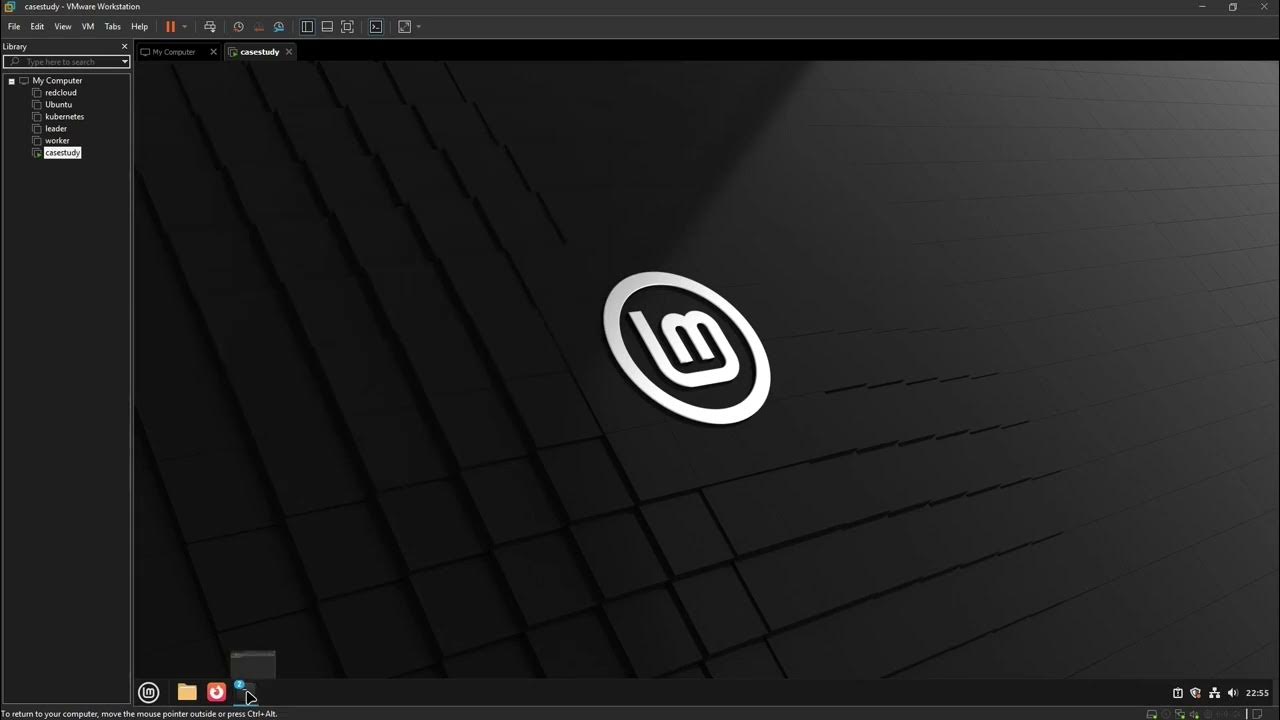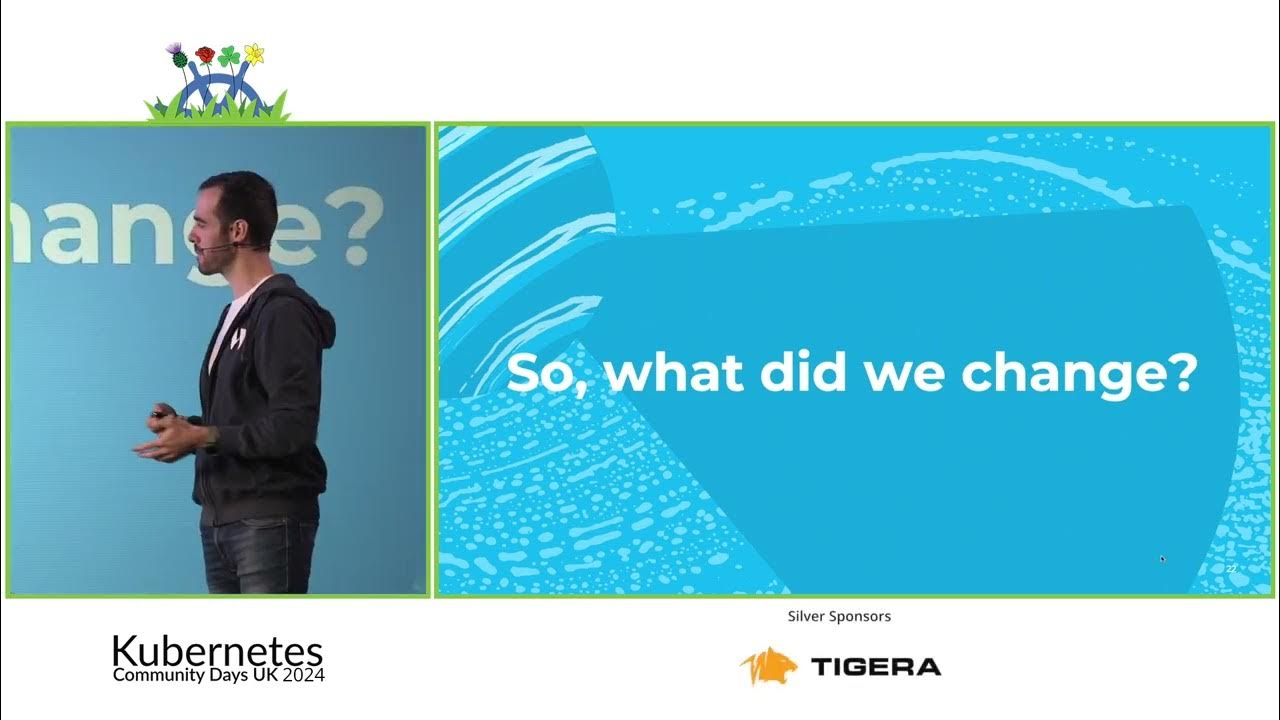Helm Mini Course Part 7 - How to Avoid "Snowflake Clusters"
Summary
TLDRIn this video from the Helm mini course, the instructor warns about a common problem when using Helm in Kubernetes—creating ‘snowflake clusters.’ These are clusters that are uniquely configured without proper documentation or version control, leading to difficulties in rebuilding or managing them. The video compares this problem to the concept of snowflake servers, which are ad hoc and hard to replicate. The instructor emphasizes the importance of controlling Helm charts and using scripts or configuration management tools to avoid these issues in production environments, urging viewers to manage their Helm setups systematically for future scalability.
Takeaways
- 😀 Helm is often introduced as a package manager for Kubernetes, but this approach can lead to potential problems in production environments.
- 😀 Snowflake servers, where configurations are unique and difficult to replicate, are a major risk in IT projects, and the same concept applies to Kubernetes clusters.
- 😀 Installing software ad-hoc on a cluster without keeping track of the configuration can create 'snowflake clusters,' which are hard to rebuild in case of failure.
- 😀 Remote charts in Helm, which you don't control, are dangerous because they may no longer exist in the future, leaving your cluster in a broken state.
- 😀 The snowflake cluster problem occurs when installations are done manually without documenting or versioning the configurations.
- 😀 Even if you have a list of installed packages, it's challenging to track all of them in a disaster recovery scenario, leading to chaos during critical situations.
- 😀 The snowflake server pattern is an anti-pattern in DevOps because it creates unreliable and unrepeatable infrastructure setups.
- 😀 To avoid snowflake clusters, it's recommended to use version control for your configurations and rely on scripts to recreate the setup automatically.
- 😀 Using Helm’s `install` and `upgrade` commands with remote charts without controlling the configuration can result in an unmanageable cluster setup.
- 😀 The next steps in the series will cover how to manage and avoid the snowflake problem by controlling Helm charts through YAML files and source control.
Q & A
What is the main warning given in this video about using Helm?
-The main warning is about the potential risk of creating 'snowflake clusters' when using Helm. This occurs when packages are installed in an ad hoc manner, leading to a configuration that is difficult to replicate or restore later.
What is a 'snowflake server' and how does it relate to Helm?
-A snowflake server is a server that has been customized over time with various software installations and configurations, often without proper documentation or automation. In the context of Helm, a snowflake cluster refers to a Kubernetes cluster that has been similarly customized through Helm installs, leading to potential future issues with re-creating or replicating the environment.
What is the danger of installing software onto a cluster using Helm without a proper strategy?
-The danger is that you may end up with a snowflake cluster, where the configuration is ad hoc, and it's difficult to remember or track all the software installations, making it hard to rebuild the cluster in case of a failure or disaster.
What is the analogy made between snowflake servers and Helm installations?
-The analogy is that just as snowflake servers are unique and difficult to replicate due to manual installations and configurations, Helm installs can create unique, untracked clusters (snowflake clusters) that are hard to replicate or restore if something goes wrong.
What was the original idea behind Helm, and how has it evolved?
-Helm was originally designed as a package manager for Kubernetes, similar to Homebrew for macOS. The idea was to allow users to easily install pre-packaged software (charts) into their clusters. However, this approach can lead to problems if not used carefully, as it may encourage untracked, manual installations that create snowflake clusters.
What is the 'phoenix server' concept mentioned in the video?
-A phoenix server is a server that is entirely configured through a scripted process, often using tools like Ansible, Puppet, or Chef. This ensures that the configuration is reproducible, and if the server needs to be rebuilt, it can be done automatically using the script, avoiding the issues associated with snowflake servers.
Why is it important to avoid snowflake clusters in production environments?
-Snowflake clusters are problematic because they lack proper documentation or a reproducible setup. If a failure occurs and you need to rebuild the cluster, you might not remember exactly what was installed or how it was configured, leading to a lot of manual work and potentially costly errors.
What practical step should be taken to avoid creating snowflake clusters with Helm?
-To avoid creating snowflake clusters, it is recommended to store the configuration of the Helm charts in source control and use scripts or other automated methods to install and manage packages. This ensures that you can recreate the cluster with a single command whenever needed.
What potential issue arises from using remote Helm charts in production environments?
-The issue with using remote Helm charts in production is that if the chart is removed or updated in the future, you may not be able to restore the original cluster setup. This can lead to difficulties in managing the cluster and recreating its exact configuration if needed.
How does the concept of 'snowflake clusters' become a serious issue in larger projects?
-In larger projects, the problem of snowflake clusters can become serious when numerous packages are installed without proper tracking. Over time, it becomes difficult to remember or document all the software components, which can lead to significant challenges when trying to restore the cluster, especially during a crisis or disaster recovery.
Outlines

هذا القسم متوفر فقط للمشتركين. يرجى الترقية للوصول إلى هذه الميزة.
قم بالترقية الآنMindmap

هذا القسم متوفر فقط للمشتركين. يرجى الترقية للوصول إلى هذه الميزة.
قم بالترقية الآنKeywords

هذا القسم متوفر فقط للمشتركين. يرجى الترقية للوصول إلى هذه الميزة.
قم بالترقية الآنHighlights

هذا القسم متوفر فقط للمشتركين. يرجى الترقية للوصول إلى هذه الميزة.
قم بالترقية الآنTranscripts

هذا القسم متوفر فقط للمشتركين. يرجى الترقية للوصول إلى هذه الميزة.
قم بالترقية الآنتصفح المزيد من مقاطع الفيديو ذات الصلة

What is Helm in Kubernetes? Helm and Helm Charts explained | Kubernetes Tutorial 23

How to Create Helm Charts - The Ultimate Guide

03 Kubernetes Monitoring dan Alerting

An Odyssey with ArgoCD. From Git to Helm | Farah Adbib & Antonio Alferez

Day-32 | How to Manage Hundreds of Kubernetes clusters ??? | KOPS | #k8s #kubernetes #devops

Cheryl Trillo
5.0 / 5 (0 votes)
